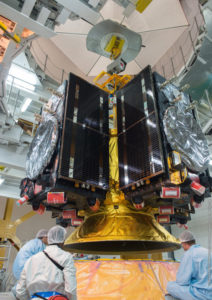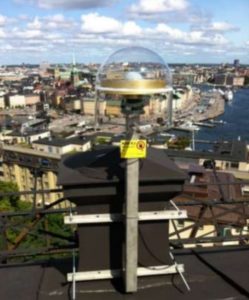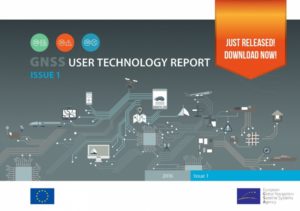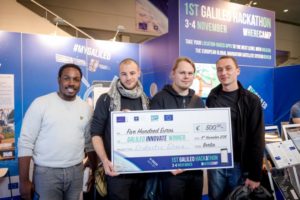Antonianna, Lisa, Kimberley and Tijmen – the latest Galileo spacecraft for Europe’s satellite navigation constellation – have been integrated with their Ariane 5 launcher in French Guiana for a November 17 Arianespace mission.
The four 715 kg satellites – named for winners of a European children’s drawing contest – were attached to their dispenser as a combined ‘upper composite’ and transported to the final assembly building on 31 October.
The next step saw them put on top of the upper stage of their customised launcher. Finally, on 3 November, the quartet was enclosed within a protective fairing – the last time they were seen by human eyes – to protect them from the onrushing atmosphere during ascent.
Arianespace previously has lofted 14 Full Operational Capability (FOC) and In-Orbit Validation (IOV) satellites for Galileo from French Guiana with seven missions utilizing its medium-lift Soyuz vehicle, along with two other Soyuz flights from the Baikonur Cosmodrome that deployed the GIOVE-A and GIOVE-B experimental satellites.





